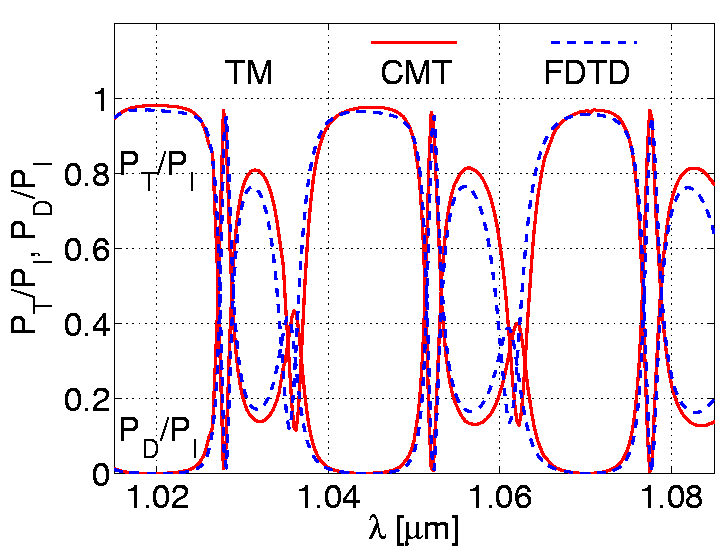Coupled mode theory based 2-D microresonators results:
2-D Microring resonator configuration: Cavity of radius R = 5 µm, core width wc=0.5 µm and core refractive index nc=1.5 is coupled to straight waveguides of core width wc=0.4 µm and core refractive index nc=1.5. The background refractive index nb=1.0 and gap widths g= 0.2 µm.

Local intensities (top) and snapshots of the physical field (bottom) of the principal components of TE (left) and TM polarized waves (right), for off-resonance wavelengths (first and third column) and at resonance (second and fourth column). 

Relative transmitted PT and dropped power PD versus the vacuum wavelength λ for a ringresonator. Go to top 2-D Microdisk resonator configuration: Cavity of radius R = 5 µm, core width wc=R µm (disk) and core refractive index nc=1.5 is coupled to straight waveguides of core width wc=0.4 µm and core refractive index nc=1.5. The background refractive index nb=1.0 and gap widths g= 0.2 µm. Field examples for the microdisk resonator. CMT simulations with four basis modes (3 cavity modes and 1 straight waveguide mode). Absolute value |Ey|of the principal component of the TE fields (top), and snapshots of the real physical electric field (bottom). The wavelengths correspond to an off-resonance configuration (left) and to minor (center)and major resonances (right). The gray scale levels of the plots in each row are comparable. 
 Spectral response of above microdisk resonator. Go to top |